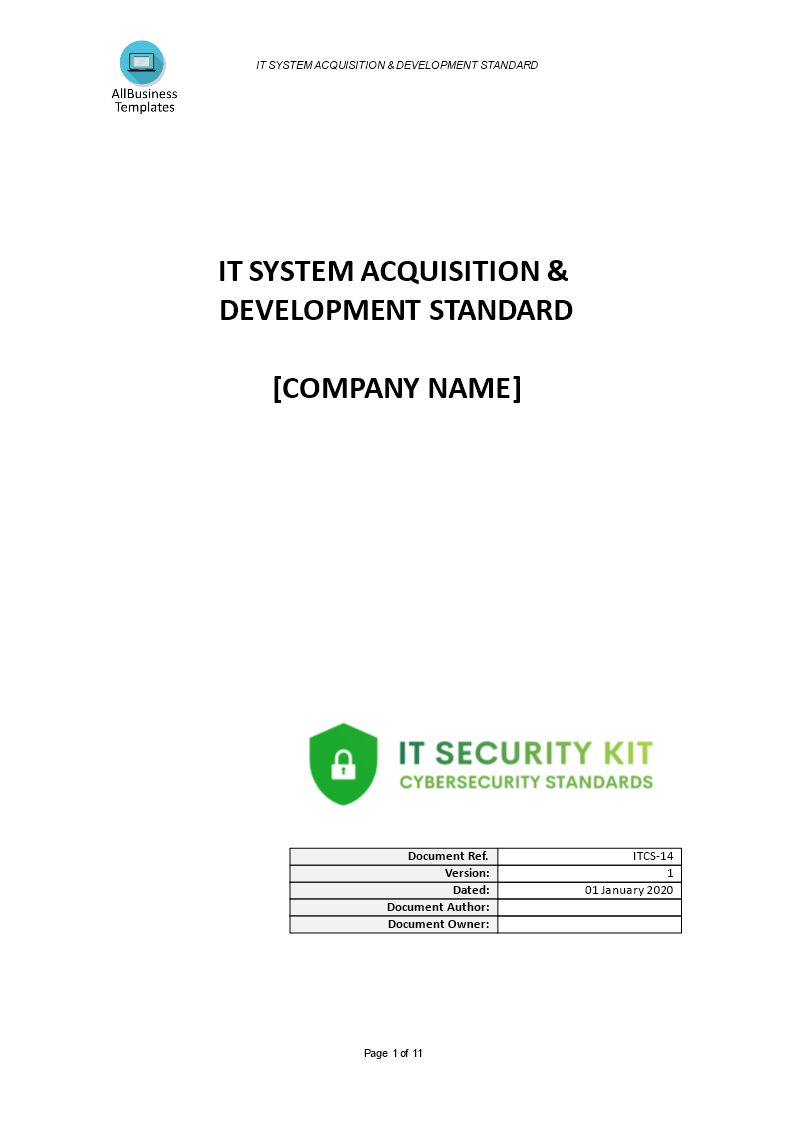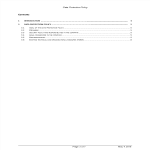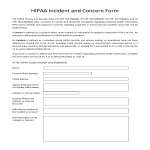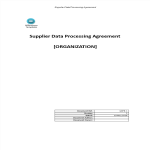IT System Acquisition & Development

I-Save, punan ang mga blanko, i-printa, Tapos na!
How to create an IT System Acquisition & Development Standard? Download this IT System Acquisition Standard if you are working on IEC, NIST, ISO27001:2013, etc
Ngayon: USD 7.99
I-download ngayon!

Mga magagamit na premium na format ng file:
.docx- Itong dokumento ay sertipikado ng isang Propesyonal
- 100% pwedeng i-customize
Compliance IT information technology IT SOP GDPR Iso GDPR template Template ng GDPR ccpa iso27001 isms ccpa template nist standard iso it standard iso27001:2013 information security standards pdf security standards definition network security standards cyber security standards uk cybersecurity cyber security compliance standards nist security standards information security standards it security management information security best practices information security policy standards it security security techniques information security management systems cybersecurity standards IT compliance it standard operating procedure it security compliance how long does it take to implement iso27001 iso27001 questions iso 27001 controls list iso 27002 checklist
How to create an IT System Acquisition & Development Standard? Download this IT System Acquisition Standard if you are working on IEC, NIST, ISO27001:2013, or other IT and Cyber Security Standards and control objectives.
This standard applies to all application development within an organization but is supplemented by a separate standard for the development of web applications security standard.
This standard is not intended to be an exhaustive list of security considerations for development – many sources of good practice are available such as Carnegie Mellon University Software Engineering Institute (SEI) Capability Maturity Model, Agile, and other traditional Waterfall Models. [Company Name] software development teams must seek appropriate guidance, especially when using new application languages, tools, and frameworks.
Maintaining a strong information security posture and managing information security risks relies on many disparate controls within infrastructure, operating environments, and applications. The threats facing the Company are changing and security attacks are focused on security vulnerabilities in software applications as opposed to infrastructure devices, hence there is an increased focus on the development of applications.
The purpose of this standard sets out the baseline requirements for information security within the “System Acquisition and Development” lifecycle, in order to reduce the risk of vulnerabilities being introduced by applications acquired or developed internally by a Company.
The methods that the Company can adopt to implement information systems are as follows:
- In-house development.
- Acquisition of an implemented solution (commercial off the shelf package).
- Assigning the development and management of a specialized IT company (outsourcing).
Appropriate data security controls reduce the likelihood (and impact) of data breach incidents during various phases of the data lifecycle. The purpose of this standard is to set out the rules for securing the companies' data during transmission and storage. This document provides best practice recommendations on information security management for use by those responsible for initiating, implementing, or maintaining information security management systems (ISMS).
Nowadays, with the digitalization of our society, the need for data protection became more important. The latest IT Security Standards involve the application of technology to broader social and institutional contexts, and thereby contributes to the servitization of companies, and affects how they compete and interact. This document contains security technology solutions to protect data classified as “Highly Sensitive”, “Sensitive”, “Private” or “Public” as per the Data Classification Standard and Data Handling Guidelines. Specifically:
- Cryptography – Encryption and hashing solutions for protecting sensitive data when in transit or storage, and
- Data Masking – Data masking is a technology for obscuring sensitive information in non-production environments. Through data masking [Company Name] protects the content of sensitive data in non-production environments to ensure that:
- Application developers, testers, privileged users and outsourcing vendors do not have unauthorized access to such information.
- The data maintains the referential integrity of the original production data.
Download this IT System Acquisition & Development Standard now. Besides this document, make sure to have a look at the IT Security Roadmap for proper implementation and this fit-for-purpose IT Security Kit here with over 40 useful templates. The document(s) are easy to modify and can be downloaded directly after purchase.
DISCLAIMER
Wala sa 'site' na ito ang dapat ituring na legal na payo at walang abogado-kliyenteng relasyon na itinatag.
Mag-iwan ng tugon. Kung mayroon kang anumang mga katanungan o mga komento, maaari mong ilagay ang mga ito sa ibaba.


